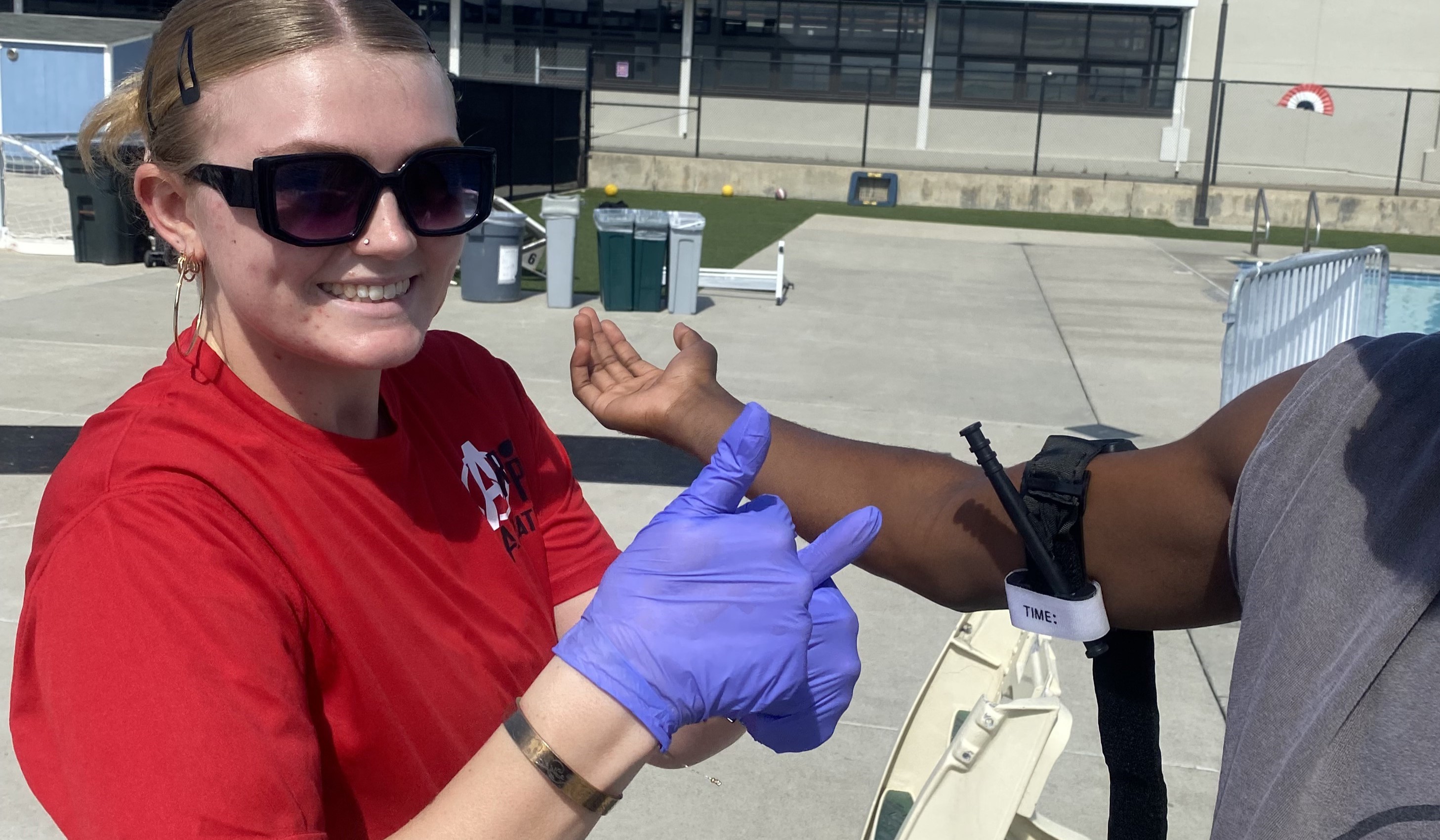In drought times, the mantra needs to be “Remove more, add less.”
This refers to how the water should be treated. In short, we should aim to remove more organics while adding less solid byproducts.
When the practice of draining and refilling pools is under increased scrutiny by water districts, particularly in California, pool professionals should carefully consider what chemicals they’re using and ask themselves: What is this leaving behind in the water?
Here’s an example: Over half of a tri-chlor tablet is made up of cyanuric acid. Consider that for every part per million of chlorine from a tri-chlor tablet, 0.6 ppm of cyanuric acid is being added. High cyanuric acid contributes to high total dissolved solids (TDS), which creates more demand for chlorine and eventually could lead to draining the pool.
Likewise, calcium hypochlorite leaves calcium behind as a byproduct. Calcium contributes to total hardness.
Continual use and shocking with a cyanuric- or calcium-based chlorine should be carefully considered. These lead to an increased need for sodium carbonate and sodium bicarbonate — again something that puts more dissolved solids in the water.
Also avoid cleaners and metal products that contain phosphates, another contributor to TDS.
TDS leads to the water becoming oversaturated, so the need for draining increases.
Think of adding sugar to a glass of tea. Initially, there is enough tea to absorb the sugar, but keep adding sugar and it will begin to drop out at the bottom of the glass. This same scenario goes for pools when chemicals leave byproducts behind: They stack up until the water simply can no longer absorb the solids. This leads to the formation of scale and cloudy water as this dissolved material is forced out of solution.
To preserve precious water, we need to be aware of how chemicals affect water balance and choose products that are more neutral, such as oxidizers, clarifiers and phosphate removers. These are products that remove contaminants while leaving fewer undesirables behind. Oxidizers, for example, work to effectively break down organics. Similarly, clarifiers work to remove micron-sized organics that lead to algae growth, which are a part of the TDS equation.
Cap evaporation
And let’s not overlook evaporation. Average-sized pools in warm-weather states, such as California, can lose their entire contents to evaporation within a year. Pool covers can help maintain healthy water levels. However, not every homeowner has one. So, liquid covers make a good alternative.
Liquid solar covers use a technology that goes back to the early 1950s for the reduction of evaporation in drinking water reservoirs. They are basically nontoxic fatty alcohols that form the minute layer on the pool.
This creates great water surface tension, which reduces the amount of evaporation, particularly at night and early morning when the air is cooler than the water.
Liquid solar covers usually are emulsions of the fatty alcohols blended with dispersants to help spread the layer across the water. For this reason, it is important to shake or blend well before adding. Typical doses are 4- to 8 ounces added weekly or monthly. Frequently used pools or pools with fountains would require higher dosing.
Liquid covers can reduce evaporation by 30- to 80 percent.
As a pool professional, taking the time to be proactive and aware of how chemicals affect the water will help you get through drought times with minimal need for draining.
A few more pointers
• Some technicians do other tasks while backwashing. As a result they end up wasting more water than necessary. Instead, keep a close eye on the sight glass and turn off the valve as soon as the water is clear. Also, try oxidizing more, and use enzymes and clarifiers to remove undesirables. This will help reduce the need to backwash.
• It’s important to tap off the pool to maintain a healthy water level. But some technicians have a tendency to overfill — or, worse, they accidentally leave the water on, potentially wasting hundreds of gallons. We can’t afford to waste water in this climate. So, here’s a tip: Clip your keys to the hose bibb. That way you won’t forget to turn off the water before you leave.
• Try to encourage your clients to minimize their use of waterfeatures. Aeration from waterfalls and fountains can increase evaporation rates.



